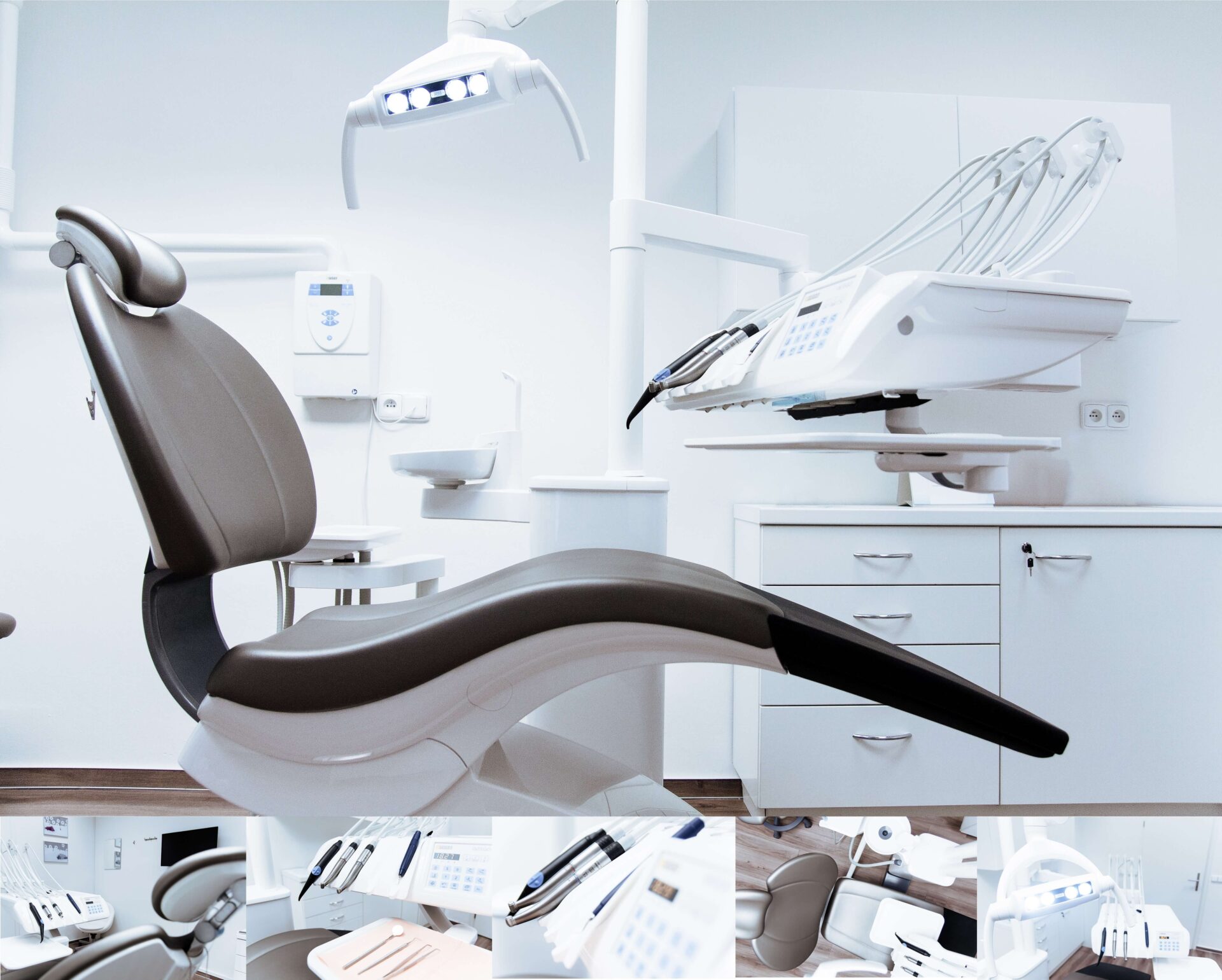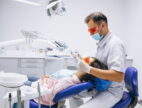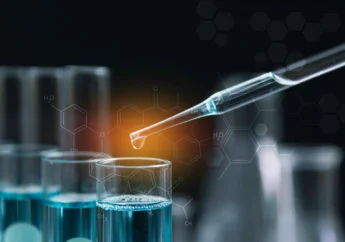How Technology is Bridging the Gap between Doctors and Patients?
by Mashum Mollah Health Care Services Published on: 05 December 2018 Last Updated on: 20 May 2025

Recently I was experiencing some discomfort due to pain in my molar, and after having tried a variety of home remedies (all futile), I found myself at the dentist in no time. Since I’ve moved to a new city, I had to find a dentist whom I could trust with the scary curettes and pliers that they hold like Thor’s hammer. Making use of technology, I googled dentists near my area; then I logged on to a website that had reviews of doctor service, then I downloaded an application through which I booked an appointment with a dentist and finally got treated for the pain. In doing so, I also read the reviews that the patients had left on a certain website.
It would have been the script of a science fiction movie if it were the 80’s or even 90’s. But it is neither fiction, nor we were in the 20th century. Technology has taken over reins from the mundane ways of how we used to function. One such transition is done in the healthcare sector. Advancement in technology to deliver more sophisticated services is one thing that’s done right.
The relationship between patient and doctor is being enhanced by technology, making the process of finding a doctor online easier, and more sophisticated. It has enabled an accurate and seamless interaction with real-time updates to the doctors regarding their patient’s health status. With enhanced accuracy and feasibility, it is thereby reducing the per capita cost in this sector.
To improve health outcomes and reduce readmission rates, doctors and patients are working in tandem with each other in areas from virtual reality to wearable technologies to telehealth. The potential is limitless.
Sharing information related to health:
Data is of utmost importance today. It is on the basis of data that analysis is done, experiments are conducted, and patterns are identified. It is on the basis of data which the patients share with their doctor that helps them diagnose and identify the ailment and prescribe the treatment. The way we share this data is now changing.
With advancement, the procedure to be followed and the medications to be taken are being developed using sophisticated technology. Many of these applications have a provision that enables caregivers, doctors, and patients to give consent to get a bird’s eye view of the patient’s health and accordingly prescribe the best solutions in the given situation.
Access to detailed data is being provided to the doctors and patients with the help of such applications. It is helping them in identifying contra-indicative drugs and developing comprehensive health management plans. Apart from utilizing data to draft a plan, technology is helping design alert systems for making appointments and generating reminders. Such a service is helpful in all situations irrespective of whether the patient is elderly or young or is someone who is not in a position to take the load of managing their treatment.
THE IMPACT THAT THE LATEST TECHNOLOGIES ARE HAVING IN THE HEALTH SECTOR:
Let us see in what ways is technology making things easier and better for people, and which all technologies have emerged in the healthcare sector which is proving to be a game changer.
Big Data:
Multiple opportunities are being provided by Big Data to utilize tons of information out there relatively quickly. The insights that it gives us is helping us provide better patient care. Analysis, management, and organization have become easier. Various applications and software that cater specifically to this have been developed. It is a matter of time when services will be automated with the information that is provided to the system.
Cloud Computing Services:
Then there are cloud computing services which is another promising facet of technological advancement. One of the shining examples of this technology is Microsoft Azure. Its usage is in diabetic retinal examinations. The company is contributing to the healthcare industry by offering a myriad of products for care coordination. A few of many of these technologies are used in operational analytics, clinical analytics, patient engagement, telehealth solutions, and cybersecurity solutions. It assists and enables clinicians to continue their job of serving the patient and delegating the technical aspects and its management to these technologies.
Virtual Reality:
The application of virtual reality in the healthcare sector has been the biggest boost to this sector. From getting virtual appointments booked with their clinicians to conducting full-fledged operations with the help of VR gear, it is changing the lives of millions in ways It has a wide-ranging application. Its application in teaching should be considered as a massive boost in making education accessible as not everyone gets to stand next to a surgeon and observe his ways. Medical students can don their VR goggles and observe every procedure being performed up to the last detail.
Artificial intelligence (AI):
The widest application of artificial intelligence in the healthcare industry is due to the way it has eased administrative tasks. It is estimated that it can save $18 billion that is spent on human resources. Technologies such as voice-to-transcription can help take notes and prescribe medication. Likewise, AI and radiology have been in an advantageous partnership because of the advancements observed in AI-integrated radiology equipment. Medical imaging is now improved and has the ability to classify imaging, detect hidden fractures and discover anomalies better than before. AI has applications for physicians who can analyze thousands of medical papers using natural language processing to inform treatment plans. One of the examples is It focuses on solving issues and providing solutions to conundrums in life sciences and pharmaceutical industries. It uses artificial intelligence to arrive at solutions. Analyzing data and giving insights on the basis of its functioning.
Despite this, technology has and will continue to be essential in emergencies. In particular, we have seen this with the increased use of medical alert devices as discussed here, and their ability to provide 24/7 assistance.
WEARABLE DEVICES AND THEIR APPLICATION:
Monitoring health is crucial to take preventive measures against health issues. Effective monitoring through traditional ways is a cumbersome process. People procrastinate till their bodies let them function normally and does not give them any major signs of serious health issues. Here the game-changer is the wearable devices linked to apps which automate the process of monitoring and provide real-time data to the individual wearing it or directly to their doctor. It helps diagnose with enhanced accuracy, and make a treatment plan before the situation slips out of hand. It can be said to be a precautionary measure rather than a solution since prevention is better than cure. But it is essential as it is the first step towards getting aware about one’s health.
Wearables to track data such as blood sugar levels, blood pressure, heart rate and some other statistics which relieves the patient of the pressure of rushing to the hospital are better than manual methods. The data collected and transmitted to clinicians allow them to download the readings to get the complete picture of their patient’s health. However, with the increasing use of wearable devices, the importance of medical device cybersecurity has also become critical. Ensuring that these devices are secure from cyber threats can be important for protecting sensitive patient data and maintaining the integrity of the healthcare system.
THE NET OF INTERNET OF THINGS (IoT):
Apart from wearables, a new concept that’s emerging is the Internet of Things (IoT). It has wide applications in the healthcare sector. From remote monitoring to developing smart sensors to medical device integration, IoT is proving to be the next big thing in the healthcare sector. It has the potential of keeping patients healthy by giving tailor-made solutions to their problems. It can help boost patient engagement and satisfaction by enabling them to interact effectively with their clinicians.
How exactly is it helping the healthcare sector? IoT is lifting pressure from hospitals by integrating technology associated with real-time location services that track and monitors patients, the hospital staff and even medical equipment in some cases.
Making use of the technology, the concept of “smart beds” is getting popularised. These beds allow the attendants to check whether the patient is in their bed or not. It also monitors whether the patient is attempting to get up from the bed. Broad usage of these beds will be of immense utility in geriatric care because old people are more susceptible to falling and need assistance for movement.
Technology cannot alter the doctor-patient relationship, but the benefits that it comes with must be acknowledged and utilized. Cloud Computing, IoT, Big Data Artificial Intelligence, wearable devices, and other emerging technologies should be harnessed for the betterment of humankind.
There is both skepticism and optimism over the use of technology in the healthcare sector. In any case, there should be an assurance that a Frankenstein’s monster shall not be created in the effort of easing the process of delivering health services for the betterment of people. It should be used wisely and should be regulated if required. The lives of people are of the utmost importance, and any such decision which affects the lives of people should be taken with utmost importance.
LSI keywords- the impact of technology in healthcare, examples of technology in healthcare, benefits of technology in healthcare, technology in healthcare today, the importance of technology in healthcare.
Read Also:



































































































